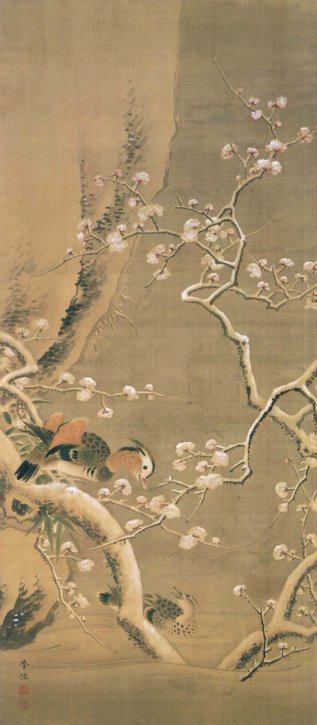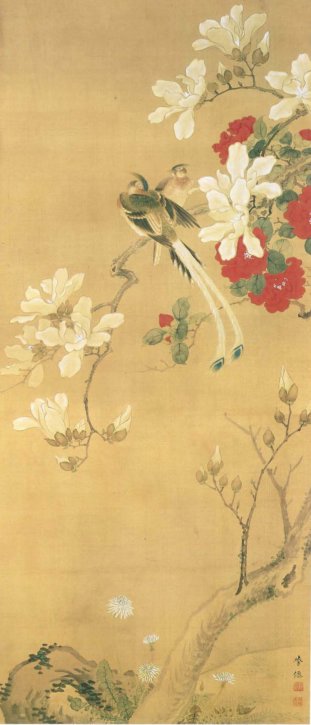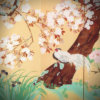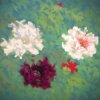Ōba Gakusen: A Japanese Painter Who Had Started His Career as a Painter in the Town of Hagi and Ended up Winning a Reputation in Tokyo During the Meiji Era.
Mandarin Ducks on a Snowed Plum Stem / Long-Tailed Cocks on a Magnolia Branch


In 1820, Ōba Gakusen was born in Yamagata Prefecture. Gakusen had started his learning under the guidance of Asakura Nanryō, a painter of Tokuyama Domain, but later went to Kyoto and asked Oda Kaisen, a Nanga painter, for the instruction. After the Restauration of Meiji (around 1868), Ōba Gakusen moved to Tokyo and exhibited his works at the 1st Naikoku Kangyō Hakurankai exhibition in 1877, and at the 2nd in 1881. And at the 2nd exposition, he received an honorable mention. Moreover, Gakusen served as a judge at the 1st Naikoku Kaiga Kyōshinkai exhibition held in 1882. Also in 1882, Gakusen exhibited his works at the Japanese Art Inspection in Paris. In the following year, 1883, Gakusen was assigned as a judge at the 2nd Naikoku Kaiga Kyōshinkai exhibition, and there, he himself won the silver prize. Later, Gakusen was involved in various art works including the production of Sugito-e (painting on cedar-board doors) at the Imperial Palace which was completed in 1888. In August 1899, Gakusen died in Shimonoseki, Yamaguchi. Takashima Hokkai, a Japanese painter, who gave an influence to the Art Nouveau Nancy School, was Gakusen’s son-in-law. Among Gakusen’s works, Chinese figure paintings which he learned from his master, Oda Kaisen, were the best and he frequently created works of this genre. Gakusen created some fine works of bird-and-flower paintings, too. And these pair scrolls are two of his masterpieces in this genre. One of these pair scrolls, “Mandarin Ducks on a Snowed Plum Stem”, has symmetrical and coherent composition; peculiar rock cliff on the left in contrast to plum branch on the right; a cock mandarin duck on the upper side of the left plum stem and a plum blanch below that stem. In comparison to the size of mandarin ducks, plum flowers were drawn bigger. One may feel that it is to create a decorative canvas. Almost the same can be said to another, “Long-Tailed Cocks on a Magnolia Branch”. Larger Magnolia tree and camellia flowers, compared to the size of long-tailed cocks, exhibit a sufficient decorative effect that Gakusen intended.










